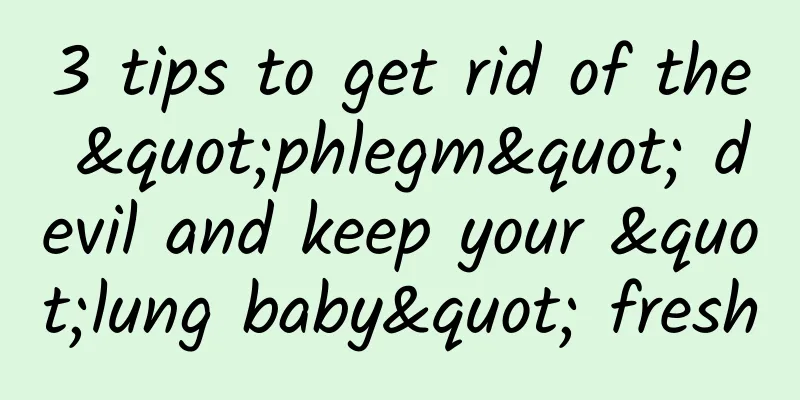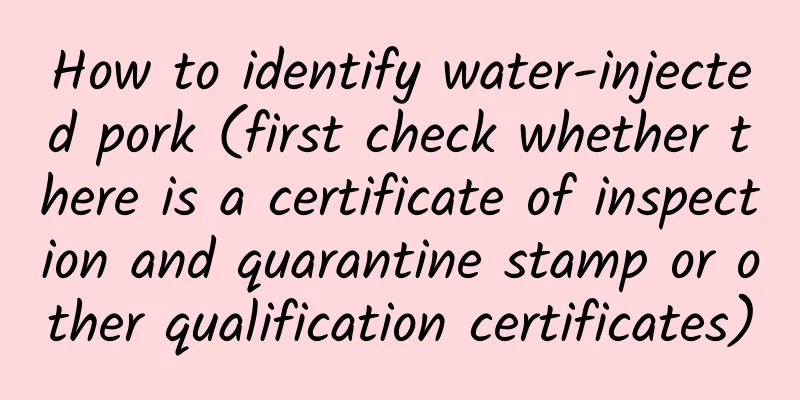3 tips to get rid of the "phlegm" devil and keep your "lung baby" fresh

|
Author: Li Xin Shenzhen Longgang District Third People's Hospital Reviewer: Zhou Xiuhong, Chief Nurse, Shenzhen Longgang District Third People's Hospital Are you still troubled by repeated coughing, thick sputum, and difficulty coughing it out? Learn these three active breathing cycle techniques, which can help you expectorate easily at any time and any place! First, choose a safe and stable position, such as sitting or lying, with a backrest to relax the lumbar spine, cervical spine and shoulders. Then learn the three movements of breathing control, chest expansion exercise and forced exhalation technique in turn. Figure 1 Copyright image, no permission to reprint The first step: breathing control (BC) Operation method: Breathing control is achieved through abdominal breathing. We should stay relaxed, place one hand flat on the chest and the other hand on the abdomen to feel the changes in the bulge and inward movement of the abdomen. Take a deep breath through the nose, and the abdomen will bulge when inhaling; exhale slowly through the mouth, and the lips will whistle when exhaling, and the abdomen will inward. Control the inhalation-exhalation ratio to 1:2-1:4, that is, inhale for 1 second and exhale for 2-4 seconds. Perform this step 3-5 times. Figure 2 Copyright image, no permission to reprint Tip 2: Thoracic expansion exercises (TEE) How to operate: Place one hand on the chest and take a deep breath, that is, take a deep breath actively and exhale passively like a sigh. You can feel the chest expanding when you inhale. After inhaling through the nose, hold your breath for 3 seconds at the end of the inhalation, and then exhale slowly through the mouth. Repeat this step 3 to 5 times. Figure 3 Copyright image, no permission to reprint The third trick: forced expiration technique (FET) How to do it: When we do this step, we should do BC first, and then do a hard exhale (Huff). BC is achieved through abdominal breathing, which increases respiratory ventilation, increases arterial oxygen partial pressure, improves ventilation function, and paves the way for the subsequent exhalation. Every time you do BC, you can do a hard exhalation, that is, an exhalation interspersed with BC. Exhalation is a fast exhalation without maximum effort, requiring the glottis to be open. Now we will introduce two different levels of exhalation, and you can choose according to your own situation: ① After a moderate-intensity inhalation, do a longer and lower exhalation, which is conducive to clearing secretions from the peripheral airways (i.e., the airways from the mouth and nasal cavity to the lungs); ② After a deep inhalation, do a shorter and louder exhalation, which is conducive to clearing secretions from larger proximal airways (i.e., the carina and distal trachea). Repeat this step 2 to 3 times in a row. It is especially important to note that you should not exhale too forcefully, so as not to induce bronchospasm, which will be detrimental to the discharge of peripheral secretions. Exhaling too briefly will not achieve the desired effect due to premature closure of the airway. Figure 4 Copyright image, no permission to reprint In summary, active breathing cycle technology can widely guide patients, and the program is flexible. The training order and number of the three steps in the program are not fixed and can be flexibly adjusted according to the patient's condition, but each step is indispensable. Three main usage schemes are recommended: ①A scheme, BC-TEE-BC-FET (Huff + BC); ②B scheme, BC-TEE-BC-FET (Huff)-FET (Huff + BC); ③C scheme, BC-TEE-BC-TEE-BC-FET (Huff + BC)-FET (Huff + BC). Among them, A scheme is suitable for patients with high mucus secretion but no airway hyperresponsiveness, atelectasis or airway obstruction, B scheme is suitable for patients with bronchospasm, and C scheme is suitable for patients with airway obstruction, atelectasis and some reactive airway diseases. Figure 5 Copyright image, no permission to reprint When practicing these 3 techniques, please be patient, adjust your mindset, and fully realize that this technique is not achieved overnight. I believe that by constantly practicing active breathing cycle techniques, you will be able to drive away the "phlegm" demon and keep your "lungs" fresh! Figure 6 Copyrighted images are not authorized for reproduction |
<<: "Hernia" should be "hernia" at the end. Let's talk about the "hernia" that you care about
>>: Start with "feet" - prevention of diabetic foot
Recommend
How to deal with dog burns? Can I use erythromycin ointment if the dog is burned?
Nowadays, many people have pet dogs at home. Dogs...
Can I still have sex after having cervical erosion?
Cervical erosion is a very common gynecological d...
How to treat chronic cervicitis? Home remedies are important
Chronic cervical inflammation is a problem that m...
Will your body get moldy during the rainy season?
In June, Shanghai entered the plum rain season. T...
What are the benefits of painless abortion
Painless abortion is the method of abortion chose...
How many weeks of pregnancy
There has always been a phrase "ten months o...
Pregnant woman with right chest and armpit pain
A woman's body will undergo many changes duri...
Can I eat bird's nest during confinement?
After an abortion, a woman's body is relative...
Breast pain and fever after breastfeeding
Breast pain and fever after lactation may be caus...
Will a herpes zoster outbreak kill you? One method is the most effective in preventing it!
gossip "Snakehead herpes and entanglement wi...
What should I do if there is a hole after BCG vaccination? Is it normal for BCG to cause repeated suppuration?
BCG is a Class A vaccine for preventing tuberculo...
Women's diet: What should women eat in autumn?
Women generally attach great importance to health...
Treatment of primary amenorrhea
If menstruation does not come, it is very painful...
Two years after giving birth, my belly is fat and loose. What should I do?
Just two years after giving birth, the belly is s...
The most embarrassing question a woman will encounter in her life
When faced with embarrassing gynecological proble...









